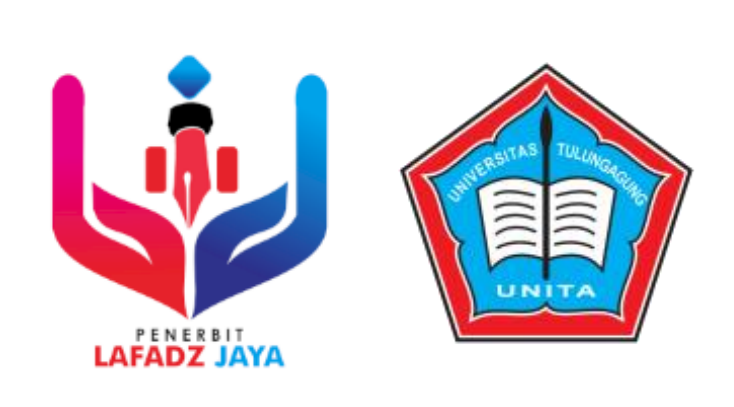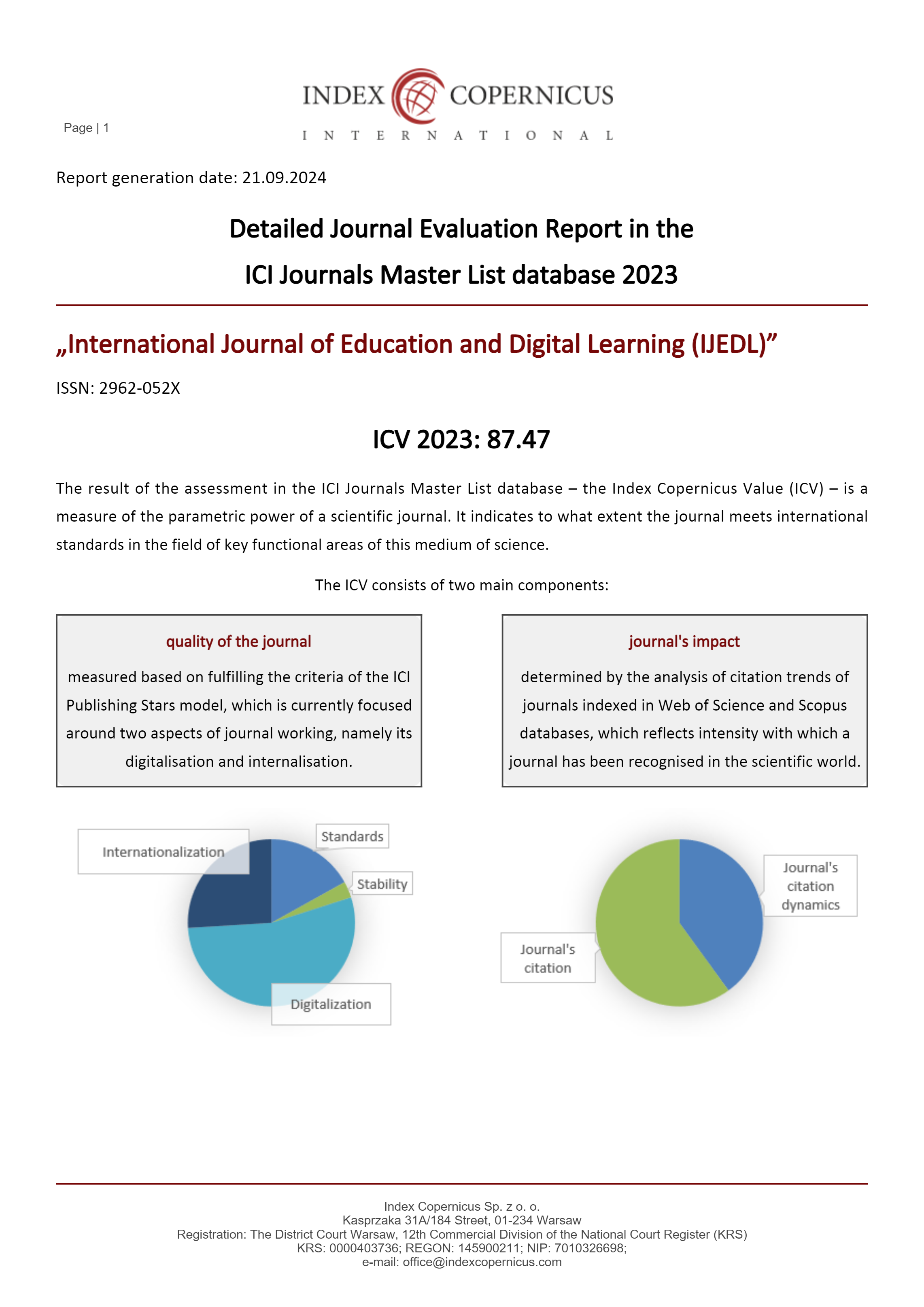Literature For Children: The Role Of Parents In Choosing Good Fairy Tales And Reading Material For Children
DOI:
https://doi.org/10.47353/ijedl.v1i3.13Keywords:
Literature, children, fairy tale, role of parents, literature for childrenAbstract
Literature is very important for our life. Literature can be enjoyed by all people, including children. There are many kinds of literature for children, namely fairy tales, folklore, children's songs, folklore, legends, and others. Literature for children is made like children's views. Imagination that emerges from children is summarized and researched into children's literature. Children's literature is made for education and as a means for children to grow to know literature. However, children need to get guidance from parents or adults in side by side with children's literature. Not all children's literature can be accepted by children. In some examples of children's literature there are things that are inappropriate for children to accept, such as fairy tales with a romantic genre. Therefore, the role of parents is important to help children get to know children's literature. Children cannot but coexist with literature. Literature for children helps children in their development. Literature for children exists so that children can express themselves as freely and as broadly as possible. Children must also accept literature and pass it on to the next generation. Without realizing it, humans live side by side with literature. Therefore, the role of parents and adults is very important in introducing literature to children.
Downloads
References
Godwin, Denise A. (1992). A postmodernist fairy tale. Journal of Literary Studies, 8(1-2), 10–21. doi:10.1080/02564719208529997
Joosen, Vanessa (2004). Feminist criticism and the fairy tale. New Review of Children's Literature and Librarianship, 10(1), 5–14. doi:10.1080/1361454042000294069
Vallasekova, Maria (1974). The Child and the Fairy-Tale. Educational Media International, 11(4), 27–34. doi:10.1080/09523987408548805
Crain, William C.; D'alessio, Esterina; McIntyre, Brenda; Smoke, Leslee (1983). The Impact of Hearing a Fairy Tale on Children's Immediate Behavior. The Journal of Genetic Psychology, 143(1), 9–17. doi:10.1080/00221325.1983.10533528
Gazzolo, Tommaso (2020). The Reflexivity of Law and of Literature. Law & Literature, (), 1–18. doi:10.1080/1535685x.2021.1847790
Bista, Krishna (2012). Multicultural Literature for Children and Young Adults. The Educational Forum, 76(3), 317–325. doi:10.1080/00131725.2012.682203
Dalgliesh, Alice (1928). Colorful Literature for Children. Childhood Education, 5(1), 26–32. doi:10.1080/00094056.1928.10723373
Kleinau, Elke; Riettiens, Lilli (2020). âNatureâ in German colonial literature for children and young people. History of Education, (), 1–19. doi:10.1080/0046760x.2020.1753825
Edgington, William D. (2002). To Promote Character Education, Use Literature for Children and Adolescents. The Social Studies, 93(3), 113–116. doi:10.1080/00377990209599893
Lewin, David (2020). Between horror and boredom: fairy tales and moral education. Ethics and Education, (), 1–19. doi:10.1080/17449642.2020.1731107
John R. R. Freer; (2021). Students’ attitudes toward disability: a systematic literature review (2012–2019) . International Journal of Inclusive Education, (), –. doi:10.1080/13603116.2020.1866688
Hung, Wai-Shun (2015). What is Literature? Revisited: Sartre on the Language of Literature. Journal of the British Society for Phenomenology, 46(1), 1–15. doi:10.1080/00071773.2014.969967
Chapman, Michael (2007). ‘World literature’: The value of an unstable category. English Academy Review, 24(1), 3–22. doi:10.1080/17535360712331393431
Cathrine Bjørnholt Michaelsen; (2021). The Ethos of Poetry: Listening to Poetic and Schizophrenic Expressions of Alienation and Otherness . Journal of the British Society for Phenomenology, (), –. doi:10.1080/00071773.2021.1915697
van Middendorp, Judy E.; Lee, Sharon (1994). Literature for Children and Young Adults in a History Classroom. The Social Studies, 85(3), 117–120. doi:10.1080/00377996.1994.9956288
Dellmann-Jenkins, Mary; Yang, Lisa (1997). The Portrayal of Older People in Award-winning Literature for Children. Journal of Research in Childhood Education, 12(1), 96–100. doi:10.1080/02568549709594720
Stark, Jacqueline Ann (2010). Content analysis of the fairy tale Cinderella – A longitudinal single-case study of narrative production: “From rags to riches”. Aphasiology, 24(6-8), 709–724. doi:10.1080/02687030903524729
Stott, Belinda (2004). Cinderella the strong and reader empowerment. New Review of Children's Literature and Librarianship, 10(1), 15 26. doi:10.1080/1361454042000294078
MacWhinney, Brian; Fromm, Davida; Holland, Audrey; Forbes, Margaret; Wright, Heather (2010). Automated analysis of the Cinderella story. Aphasiology, 24(6-8), 856–868. doi:10.1080/02687030903452632
Hui, Jonathan Y. H. (2018). Cinderella in Old Norse Literature. Folklore, 129(4), 353–374. doi:10.1080/0015587X.2018.1515207
Childers, Perry R. (1971). Snow White and the Seven Dwarfs. The Journal of Experimental Education, 40(2), 5–8. doi:10.1080/00220973.1971.11011310
Wright, Terri Martin (1997). Romancing the Tale: Walt Disney's Adaptation of the Grimms' “Snow White”. Journal of Popular Film and Television, 25(3), 98–108. doi:10.1080/01956059709602756
Kostas, Marios (2016). Snow White in Hellenic primary classrooms: children’s responses to non-traditional gender discourses. Gender and Education, (), 1–19. doi:10.1080/09540253.2016.1237619
Gottschalk, Keith (2013). Update: Snow White and her 7 Dwarves. English Academy Review, 30(1), 135–136. doi:10.1080/10131752.2013.783400
Fordiani, Tricia A. (1995). Have You Read a Fairy Tale Lately?. Kappa Delta Pi Record, 31(3), 116–119. doi:10.1080/00228958.1995.10531917
Mahoney, Erin (2009). THE HOUSE OF MIRTH and the Realistic Fairy Tale. The Explicator, 68(1), 36–38. doi:10.1080/00144940903423303
El'koninova, L. I. (2001). Fairy-tale Semantics in the Play of Preschoolers. Journal of Russian and East European Psychology, 39(4), 66–87. doi:10.2753/rpo1061-0405390466
Wexelblatt, Robert (2001). Fairy Tale Time: A Pedagogical Caprice. College Teaching, 49(3), 91–95. doi:10.1080/87567550109595856
Bernasconi, Paola (2013). A fairy tale dictator: children's letters to the Duce. Modern Italy, 18(2), 129–140. doi:10.1080/13532944.2013.780424
Badrun, Ahmad. (1983). Pengantar Ilmu Sastra. Surabaya: Usaha Nasional.
Sudjiman, Panuti. (1990). Kamus Istilah Sastra. Jakarta: UI Press.
Esten, Mursal. (1978). Kesusastraan (Pengantar, Teori, dan Sejarah). Bandung: Angkasa.
Alfari, Shabrina. 2022. ”Cerita Dongeng: Pengertian, Jenis, Ciri-ciri, Fungsi, Unsur & Contohnya”. https://www.ruangguru.com/blog/dongeng, acessed on Februari, 01 2023.
Downloads
Published
How to Cite
Issue
Section
License
Copyright (c) 2023 Martina Girsang, Grace Cya Aprilia S. Meliala, Eginta Ayu Br Sitepu, Grace Gabliela Br Gultom, Wina Ecica Br Ginting

This work is licensed under a Creative Commons Attribution 4.0 International License.













